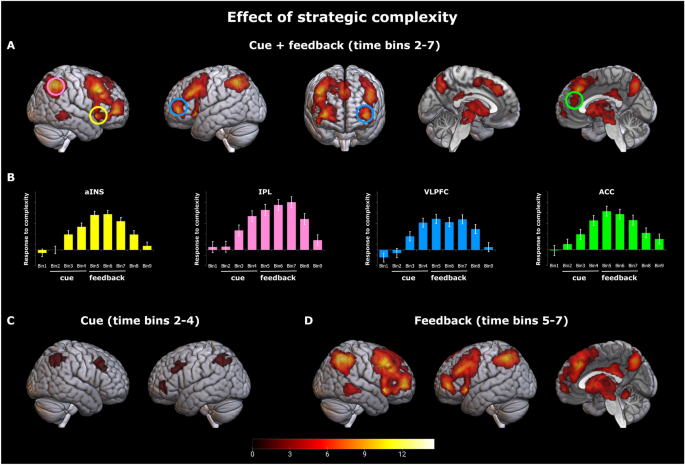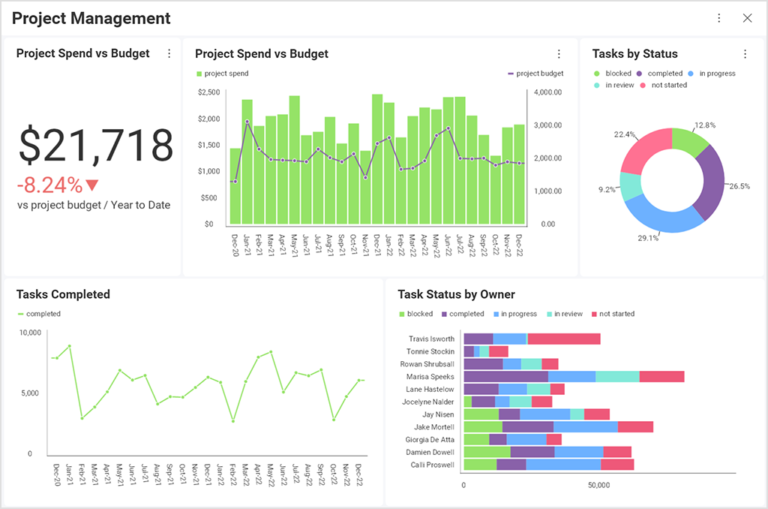Building Strategic Questions: The Art of Fostering Meaningful Professional Relationships
Discover how thoughtful questioning transforms business connections
I've found that the quality of our professional relationships often hinges on the quality of questions we ask. In this guide, I'll share how strategic questioning techniques can help you build deeper connections, establish trust, and create lasting professional relationships that drive success.
The Foundation of Relationship-Driven Questioning
I've discovered that the psychology behind effective questioning runs much deeper than most professionals realize. When we ask thoughtful questions, we're not just gathering information—we're activating specific neural pathways that foster trust and connection.

Strategic questions in professional settings differ fundamentally from casual conversation. While casual questions often serve social functions, strategic questions are deliberately crafted to achieve specific relationship objectives while still maintaining authenticity.
The neuroscience behind question-based trust building is fascinating. When someone asks us thoughtful questions that demonstrate genuine interest, our brains release oxytocin—often called the "trust hormone"—creating a biochemical foundation for deeper connection.
I've observed that question quality directly impacts business communication effectiveness. Poor questions can create defensiveness, while well-crafted ones open pathways to meaningful dialogue and mutual understanding.
Impact of Question Quality on Professional Relationships
Data shows strategic questioning significantly outperforms generic approaches across all relationship dimensions
To maximize the effectiveness of your relationship-building questions, I recommend using PageOn.ai to map your questioning framework visually. This helps identify gaps in your approach and ensures your questions follow a logical progression that builds trust over time.
The Architecture of Strategic Questions
I've found that designing questions that reveal genuine professional needs requires careful consideration of both structure and intent. The most effective relationship-building questions share certain architectural elements regardless of the specific business context.

Let me share the structural components that make questions particularly effective in professional settings:
flowchart TD
A[Strategic Question] --> B[Open-Ended Structure]
A --> C[Contextual Relevance]
A --> D[Emotional Intelligence]
A --> E[Forward Momentum]
B --> B1[Avoids yes/no responses]
B --> B2[Creates space for elaboration]
C --> C1[Demonstrates understanding]
C --> C2[References shared knowledge]
D --> D1[Considers recipient's perspective]
D --> D2[Acknowledges emotions appropriately]
E --> E1[Moves conversation forward]
E --> E2[Opens new exploration paths]
style A fill:#FF8000,stroke:#333,stroke-width:2px
style B fill:#FFC080,stroke:#333,stroke-width:1px
style C fill:#FFC080,stroke:#333,stroke-width:1px
style D fill:#FFC080,stroke:#333,stroke-width:1px
style E fill:#FFC080,stroke:#333,stroke-width:1px
I've developed question progression frameworks that guide conversations from surface-level exchanges to deep professional insights. This deliberate movement through increasingly meaningful topics helps establish psychological safety while gathering valuable information.
| Question Level | Purpose | Example |
|---|---|---|
| Surface Level | Establish rapport and comfort | "What projects have been keeping you busy lately?" |
| Exploratory | Identify potential areas of mutual interest | "What aspects of those projects have been most challenging for your team?" |
| Problem-Focused | Uncover specific pain points or needs | "How have those challenges impacted your ability to meet your strategic objectives?" |
| Value-Oriented | Connect problems to meaningful outcomes | "What would it mean for your organization if you could overcome these obstacles more efficiently?" |
| Future-Focused | Establish vision for ongoing relationship | "How do you see our organizations potentially collaborating to address these challenges going forward?" |
Creating visual question maps for different relationship-building objectives has transformed my approach to professional interactions. By mapping out question pathways before important meetings, I can ensure my questioning strategy aligns with specific relationship goals.
PageOn.ai's AI Blocks have been invaluable for organizing question hierarchies by relationship stage. I can easily visualize how initial rapport-building questions connect to deeper value-exploration questions, creating a coherent questioning strategy that feels natural rather than formulaic.
Question Types for Different Relationship Dynamics
I've found that different relationship scenarios require distinct questioning approaches. Knowing which question type to deploy—and when—dramatically improves professional connection outcomes.

Rapport-Building Questions
These questions establish authentic connections by finding common ground and demonstrating genuine interest. I've found they work best at the beginning of relationships and should focus on professional interests rather than overly personal topics.
- "What aspects of your industry do you find most energizing right now?"
- "What professional achievement are you most proud of from the past year?"
- "How did you first become interested in your current field?"
Problem-Identification Questions
These questions demonstrate value and expertise by uncovering challenges that you might be uniquely positioned to help address. The key is framing them in a way that feels supportive rather than intrusive.
- "What obstacles have been most persistent in reaching your department's goals?"
- "If you could solve one recurring challenge in your workflow, what would it be?"
- "Where do you see the most friction in your current process?"
Vision-Focused Questions
These questions align future collaborative opportunities by exploring shared aspirations and goals. They help establish long-term relationship potential and mutual benefit.
- "How do you see your role evolving over the next few years?"
- "What would success look like for your team by this time next year?"
- "Which emerging trends do you think will most impact your strategy going forward?"
Clarification Questions
These questions prevent misunderstandings in workplace communication by ensuring shared understanding. They demonstrate attentiveness and commitment to accuracy.
- "Just to make sure I understand correctly, you're saying that..."
- "Could you elaborate on what you mean by [specific term]?"
- "How would you prioritize these concerns if we were to address them?"
Question Type Effectiveness by Relationship Stage
This radar chart illustrates how different question types vary in effectiveness throughout the relationship lifecycle
I've found PageOn.ai's Deep Search feature particularly useful for finding industry-specific questioning approaches. It helps me discover specialized question frameworks that resonate with professionals in different fields, from healthcare to finance to technology.
Strategic Questioning Across Professional Contexts
I've observed that different professional contexts require tailored questioning strategies. The questions that work brilliantly with clients might fall flat with team members, and leadership scenarios demand their own unique approaches.

Client Relationship Development
When developing client relationships, I focus on questions that demonstrate both expertise and genuine interest in their business challenges. These questions should progress from understanding their current situation to exploring how you might provide value.
flowchart TD
A[Client Relationship Questions] --> B[Situation Assessment]
A --> C[Problem Exploration]
A --> D[Impact Analysis]
A --> E[Solution Vision]
B --> B1["What challenges are you currently facing with...?"]
C --> C1["How have these issues affected your team's ability to...?"]
D --> D1["What would be the value of resolving these challenges?"]
E --> E1["What would an ideal solution look like from your perspective?"]
style A fill:#FF8000,stroke:#333,stroke-width:2px
style B fill:#FFC080,stroke:#333,stroke-width:1px
style C fill:#FFC080,stroke:#333,stroke-width:1px
style D fill:#FFC080,stroke:#333,stroke-width:1px
style E fill:#FFC080,stroke:#333,stroke-width:1px
Team Cohesion and Psychological Safety
For building team cohesion, I've found questions that create psychological safety are most effective. These questions invite honest input while demonstrating that you value diverse perspectives.
- "What aspects of our current approach could we improve from your perspective?"
- "How might we adjust our process to better leverage everyone's strengths?"
- "What's one thing we could start doing as a team that would make the biggest positive difference?"
Leadership Questioning Techniques
Leadership questioning requires a delicate balance between guidance and empowerment. The best leadership questions help team members discover solutions themselves while still providing direction.
- "What do you see as the biggest opportunity in this situation?"
- "How might we approach this challenge differently than we have in the past?"
- "What support would help you feel most confident in moving this forward?"
Executive Presence Enhancement
Questions that enhance executive presence and authority tend to be strategically focused and demonstrate broad understanding. These questions signal your ability to think at a higher level.
- "How does this initiative align with our longer-term strategic objectives?"
- "What market signals are we seeing that might influence our approach here?"
- "What are the second and third-order implications we should be considering?"
I've used PageOn.ai to visualize question patterns across these different professional scenarios, which helps me quickly adapt my questioning approach based on the specific context. The visual representation makes it much easier to internalize these different question frameworks.
The Art of Question Sequencing
I've found that the order of questions matters just as much as their content. Strategic question flows create a natural progression that gradually deepens professional relationships while maintaining comfort and psychological safety.

The psychology of question timing and pacing is subtle but powerful. Questions asked too early may seem intrusive, while opportunities missed at key moments can stall relationship development. I've developed a framework for question sequencing that respects these psychological dynamics:
flowchart TD
A[Initial Context] --> B[Establish Rapport]
B --> C[Explore Current Situation]
C --> D[Identify Challenges]
D --> E[Explore Impact]
E --> F[Discuss Vision]
F --> G[Explore Collaboration]
G --> H[Next Steps]
B -.-> J[Relationship Building]
C -.-> J
D -.-> K[Value Creation]
E -.-> K
F -.-> L[Future Orientation]
G -.-> L
style A fill:#FF8000,stroke:#333,stroke-width:2px
style B fill:#FFC080,stroke:#333,stroke-width:1px
style C fill:#FFC080,stroke:#333,stroke-width:1px
style D fill:#FFC080,stroke:#333,stroke-width:1px
style E fill:#FFC080,stroke:#333,stroke-width:1px
style F fill:#FFC080,stroke:#333,stroke-width:1px
style G fill:#FFC080,stroke:#333,stroke-width:1px
style H fill:#FFC080,stroke:#333,stroke-width:1px
style J fill:#FFE0C0,stroke:#333,stroke-width:1px
style K fill:#FFE0C0,stroke:#333,stroke-width:1px
style L fill:#FFE0C0,stroke:#333,stroke-width:1px
Transitioning between question types without creating discomfort requires careful attention to verbal and non-verbal cues. I've found these transition techniques particularly effective:
| Transition Type | Example Phrase | When to Use |
|---|---|---|
| Acknowledgment Bridge | "That's really helpful context. Building on that..." | When moving from rapport to problem exploration |
| Curiosity Transition | "I'm curious about how that affects..." | When deepening into impact or consequences |
| Permission Request | "Would it be alright if we explored..." | Before asking potentially sensitive questions |
| Forward-Looking Pivot | "Looking ahead, how do you envision..." | When shifting from problems to solutions |
| Summary Transition | "So it sounds like X and Y are key priorities. How might..." | When consolidating insights before moving forward |
Building question frameworks for long-term relationship cultivation has been transformative for my professional connections. These frameworks map out how questioning should evolve over weeks, months, and even years to continually deepen relationships.
PageOn.ai's Vibe Creation tool has been invaluable for developing natural conversation progressions. It helps me visualize how different question sequences might feel to the recipient and identify potential awkward transitions before they happen.
Active Listening as the Companion to Strategic Questions
I've learned that even the most brilliantly crafted questions fall flat without genuine active listening. The questions open the door, but active listening is what builds the relationship.
Visual and Verbal Cues of Engagement
Demonstrating genuine attentiveness requires both visual and verbal signals that you're fully present in the conversation:
Visual Cues
- Maintaining appropriate eye contact (cultural norms vary)
- Nodding occasionally to show understanding
- Open body posture (uncrossed arms, facing the speaker)
- Leaning slightly forward to indicate interest
- Mirroring facial expressions appropriately
Verbal Cues
- Brief affirmations ("I see," "That makes sense")
- Paraphrasing to confirm understanding
- Asking relevant follow-up questions
- Avoiding interruptions
- Acknowledging emotions when appropriate
Capturing and organizing insights gained from questioning sessions is crucial for building institutional knowledge and demonstrating continuity in relationships. I use a structured approach to document key takeaways while maintaining focus on the conversation.
Active Listening Impact on Information Retention
Active listening significantly improves information capture across all dimensions, especially for emotional context and relationship signals
I've found that active listening directly connects to improved customer conversations and loyalty. When customers feel genuinely heard, they're more likely to develop trust and maintain long-term relationships.
PageOn.ai has been particularly helpful for creating visual summaries of key relationship insights. After important conversations, I use it to map connections between different discussion points, helping me identify patterns and opportunities that might otherwise be missed.
Question-Based Relationship Building in Educational Settings
I've observed that many of the most effective questioning techniques for professional relationships have their roots in educational contexts. The dynamics of teacher-student interaction offer valuable lessons for relationship building in any setting.

Strategic Questioning in Educational Contexts
Educational questioning techniques often follow a deliberate progression designed to deepen understanding while maintaining psychological safety:
flowchart TD
A[Educational Question Progression] --> B[Recall Questions]
B --> C[Comprehension Questions]
C --> D[Application Questions]
D --> E[Analysis Questions]
E --> F[Synthesis Questions]
F --> G[Evaluation Questions]
B --> B1["What are the key components of...?"]
C --> C1["How would you explain...?"]
D --> D1["How might this apply to...?"]
E --> E1["Why does this approach work better than...?"]
F --> F1["How could we combine these concepts to...?"]
G --> G1["What criteria would you use to judge...?"]
style A fill:#FF8000,stroke:#333,stroke-width:2px
style B fill:#FFC080,stroke:#333,stroke-width:1px
style C fill:#FFC080,stroke:#333,stroke-width:1px
style D fill:#FFC080,stroke:#333,stroke-width:1px
style E fill:#FFC080,stroke:#333,stroke-width:1px
style F fill:#FFC080,stroke:#333,stroke-width:1px
style G fill:#FFC080,stroke:#333,stroke-width:1px
Creating psychological safety through thoughtful questioning approaches is as crucial in professional settings as it is in classrooms. Questions should challenge without threatening, inviting authentic engagement rather than defensive responses.
Questions that identify learning needs can build powerful mentorship connections. By asking questions that help others articulate their development goals, you position yourself as a potential guide and resource in their professional journey.
Transferring Educational Questioning to Professional Contexts
- Socratic Questioning: Using guided questions to help others discover insights themselves rather than telling them directly
- Wait Time: Allowing 3-5 seconds after asking a question before speaking again, giving others time to formulate thoughtful responses
- Scaffolded Questions: Building questions that progressively increase in complexity as understanding develops
- Reflection Questions: Asking questions that encourage self-assessment and metacognition about processes and outcomes
PageOn.ai has been particularly helpful for designing visual question frameworks for mentorship programs. The ability to map out question progressions that guide mentees through their development journey has significantly enhanced my mentoring effectiveness.
Measuring Relationship Growth Through Question Evolution
I've found that tracking how question exchanges evolve provides a fascinating window into relationship development. As professional relationships mature, both the questions asked and the responses given change in predictable ways.

Identifying relationship milestones through changes in question-response patterns has helped me gauge relationship health and progress. These patterns reveal much about trust levels and relationship potential:
| Relationship Stage | Typical Question Patterns | Response Indicators |
|---|---|---|
| Initial Contact | Formal, surface-level, low-risk questions | Brief, guarded, general information only |
| Early Relationship | More specific, some problem exploration | Longer responses, some specific examples |
| Developing Trust | Challenge-oriented questions, some vulnerability | Candid problem sharing, asking for input |
| Working Relationship | Strategic questions, future-focused | Collaborative responses, shared planning |
| Partnership | Mutual challenging questions, innovation-focused | Co-creation, proactive information sharing |
Creating visual dashboards to monitor relationship development over time has transformed how I manage my professional network. These dashboards help identify which relationships are thriving and which might need additional attention.
Question Effectiveness Metrics
Comparing key metrics between early and mature professional relationships reveals significant differences in engagement quality
I've developed several metrics for evaluating question effectiveness in building professional connections. These include response depth, disclosure level, question reciprocity, and implementation of discussed ideas.
PageOn.ai's AI Blocks have been invaluable for creating relationship progression visualizations. I can map the evolution of questioning patterns over time and identify key moments when relationships shifted to deeper levels of trust and collaboration.
Transform Your Professional Relationships with PageOn.ai
Ready to elevate your questioning strategy with powerful visualizations? PageOn.ai helps you map question frameworks, track relationship development, and create compelling visual summaries that transform how you build and nurture professional connections.
Start Creating with PageOn.ai TodayFinal Thoughts: The Continuous Evolution of Strategic Questioning
Throughout my professional journey, I've come to see strategic questioning as both an art and a science. The most successful relationship builders I know are constantly refining their questioning approach, adapting to different contexts, and measuring the impact of their communication strategies.
What makes questioning truly strategic is the intentionality behind it—understanding exactly why you're asking each question and how it contributes to relationship development. This mindfulness transforms ordinary professional interactions into opportunities for meaningful connection.
I encourage you to experiment with the frameworks and techniques we've explored, adapting them to your unique professional context. Pay attention to how your questioning patterns influence the quality of your professional relationships, and be willing to adjust your approach based on what you learn.
With tools like PageOn.ai, you can visualize and refine your questioning strategies, creating custom frameworks that align with your specific relationship-building goals. The ability to map question progressions, track relationship development, and create visual summaries of key insights makes the abstract art of relationship building far more concrete and manageable.
Remember that the ultimate goal of strategic questioning isn't just to gather information—it's to create the foundation for authentic, mutually beneficial professional relationships that stand the test of time.
You Might Also Like
From Slides to Stories: Transform Presentations into Purpose-Driven Visual Experiences
Discover how to move beyond traditional PowerPoint presentations to create purpose-driven visual experiences that engage audiences, drive action, and leave lasting impact.
Mastering FOMO Psychology: Creating Irresistible Business Pitch Strategies | PageOn.ai
Learn how to leverage FOMO psychology in your business pitches to drive urgent action. Discover proven strategies for creating authentic scarcity, exclusivity, and urgency that converts.
Transform Any Content into Professional Slides: The Ultimate Conversion Guide
Learn expert techniques for converting documents, presentations, and visual content into professional slides with this comprehensive guide to content format transformation.
From Boardroom to Brilliance: Master Real Story Techniques for Corporate Speakers
Discover powerful real story techniques for corporate speakers that increase memorability by 22x. Learn authentic storytelling methods, visualization strategies, and delivery techniques for business impact.
